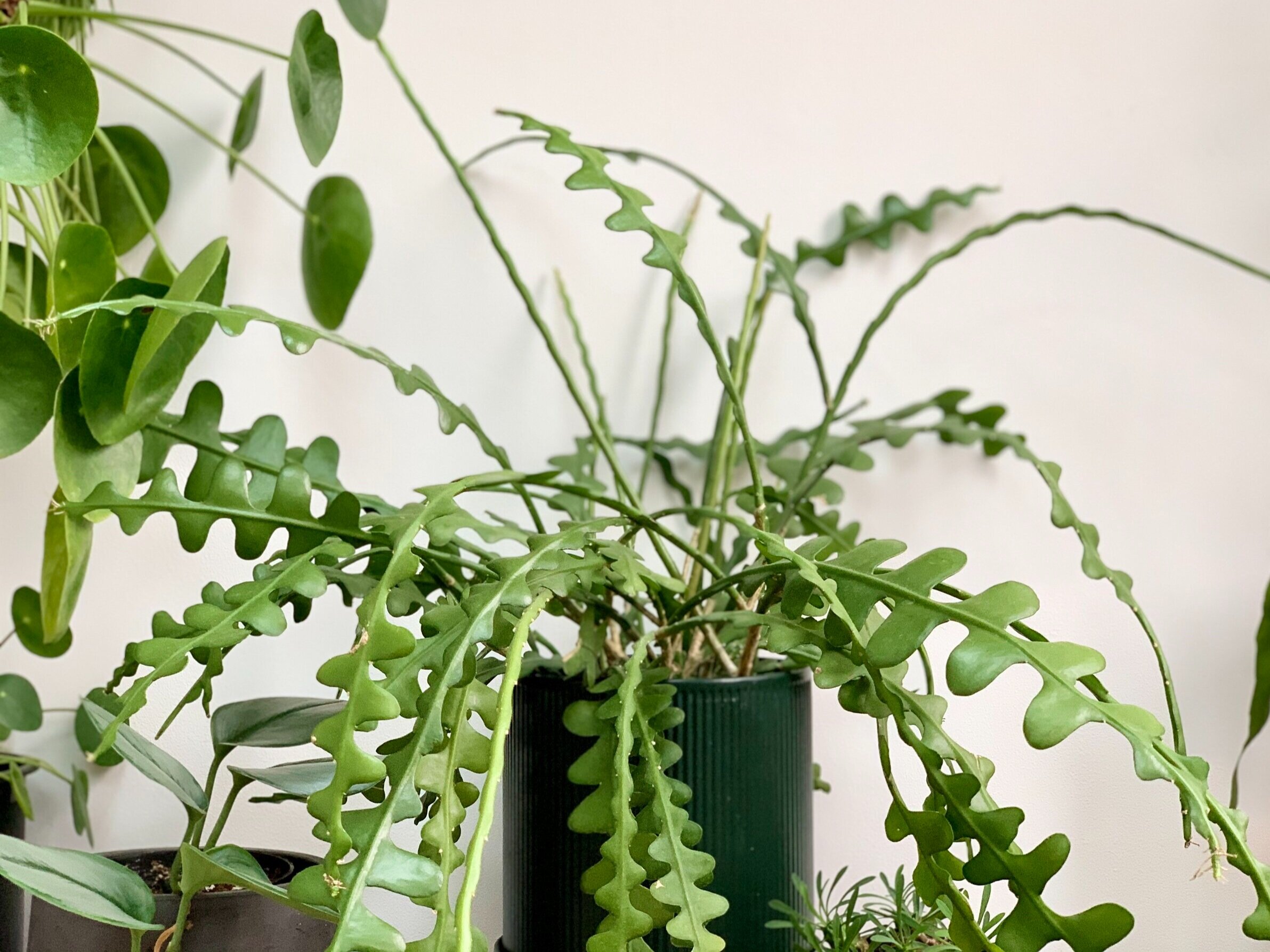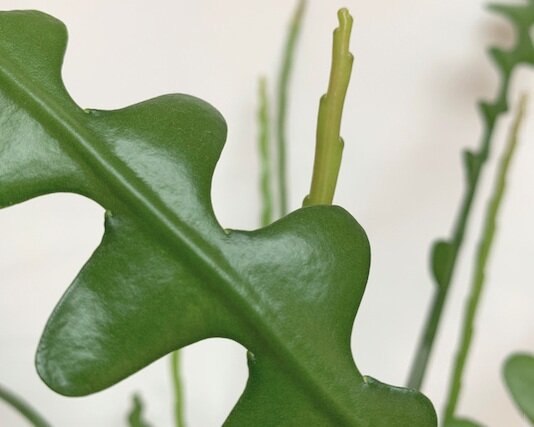The third in our Plant Profile series features one of our absolute favourite plants, the Fishbone Cactus (Epiphyllim anguliger) also known as Ric Rac plant.
It’s such a quick and easy plant to grow with brilliantly architectural shape leaves, incredible scented flowers plus it’s great to propagate and share with friends. Read on for Fishbone Cactus care tips and propagation advice.
Native habitat
The fishbone cactus is native to the rainforests of Mexico. It is an epiphyte meaning it will can grow on a ‘host’ plant, most commonly trees where they can secure their roots into the nooks and crannies of branches. Their native habitat is warm, humid and shaded from direct sun, these are the conditions we can try to mimic to make them thrive in our homes.
Light
The name ‘cactus’ may be misleading here as the Epiphyllum anguliger will be happiest in bright but indirect light, it will not like lots of direct sunlight like other cacti do. Too much direct sunlight will cause a yellowing of the leaves.
Mine sits about 2 metres away from a south facing window, I use a filtering blind at the window when the sun shines directly in. In their natural habitat the plants grow under the trees canopy where they will be receiving dappled sun or indirect light without being scorched by direct sunlight.
New leaves on Fishbone cactus
Water
I find the Fishbone Cactus to be pretty thirsty. I water once the top couple of centimetres are dry which in summer can be once a week. I make sure to always water at the sink and allow the water to drain thoroughly away before placing back in its decorative pot. Throughout the winter the plant will require less frequent watering, once every 2-3 weeks.
The fishbone cactus is really good at letting you know when it needs to be watered. The leaves will start to look a little withered and less plump.
I find these plants very forgiving and can handle some neglect, they will soon bounce back after a good watering.
Humidity
Owing to its natural habitat of tropical rainforests the fishbone cactus will like warmth and humidity, so a bathroom or kitchen are good rooms for this plant. To increase humidity further you can use a humidifier or sit the pot on pebbles within a tray of water. (Being careful to ensure the bottom of the pot is not itself sitting in the water which can lead to root rot). As the water in the tray evaporates this will increase humidity around the plant.
However, in my own experience, I do not use a humidifier or a water tray, I have several fishbone cactus that are all happy without that increased level of humidity.
Soil
The fishbone cactus will like a loose, well draining soil. You could use 2/3 cactus compost (or general houseplant compost) to 1/3 perlite, grit or orchid bark.
Repotting
The plant can be repotted every one or two years in spring to give it more room to grow and a boost of nutrients.
The fishbone or ric rac shape to the leaves
Fertiliser
Feed your plant every 2 weeks throughout spring and summer, we recommend Liquid Gold Leaf.
Growth will slow throughout winter, so there is no need to feed in those months.
Flowers
One of the main attractions to owning a fishbone cactus is the rather special and fleeting flowers. Once a plant is well established and happy it is likely to flower. The blooms are large and often pale yellow in colour.
The scent is incredible, very sweet and powerful. Before I have even seen the flowers, I can tell mine has bloomed by the smell when I enter the room. The flowers open in the evenings or at night and are very short-lived which makes them even more special. After a day or so they will wilt, shrivel and then eventually dry and can be removed.
Regular feeding, watering and lots of bright indirect light throughout summer will help your plant to flower in late summer.
Below is a video of the different stages of buds to blooms.
Propagation
One of the brilliant things about this plant is how easy it is to propagate. I have propagated mine many times, to give to friends, but also to plant the babies back into the original pot to create a fuller plant.
There are two main ways to propagate; planting cuttings straight into soil or rooting in water to be potted into soil once roots are established. For both methods I would use a youngish leaf that is about 12cm-15cm long. I would do this in spring or summer.
To root straight into soil, you can simply cut a young leaf at the stem with a clean sharp knife or scissors. Allow the cutting to callous over for a day or so where it was cut, then simply place about 2cm deep into the recommend soil mix above. Keep the soil relatively moist and roots should grow within a couple of weeks.
I like to propagate cuttings in water so I can see the root growth.
Step 1:
As per above I would cut a young leaf at the base of the stem.
Step 2:
Allow the cut end to callous over for a day or so then simply place into a small glass of water. Change the water every week to keep it clean and clear.
Step 3:
After a couple of weeks roots will grow. Once roots are a coupe of centimetres long and ideally have secondary roots growing from initial roots then it is ready to plant into the recommended soil above.
Below you can see a short video on water rooting a cutting and using it to thicken out an existing plant.
Toxicity
Fishbone cactus are non-toxic so will be safe around pets and children.
We hope you have enjoyed reading about the Fishbone Cactus and perhaps we have inspired you to own one too!
For our other plant profiles featuring the Maranta and Hoya linearis, plus other blogs all about plant care, pests and behind-the-scenes nursery tours click here.




